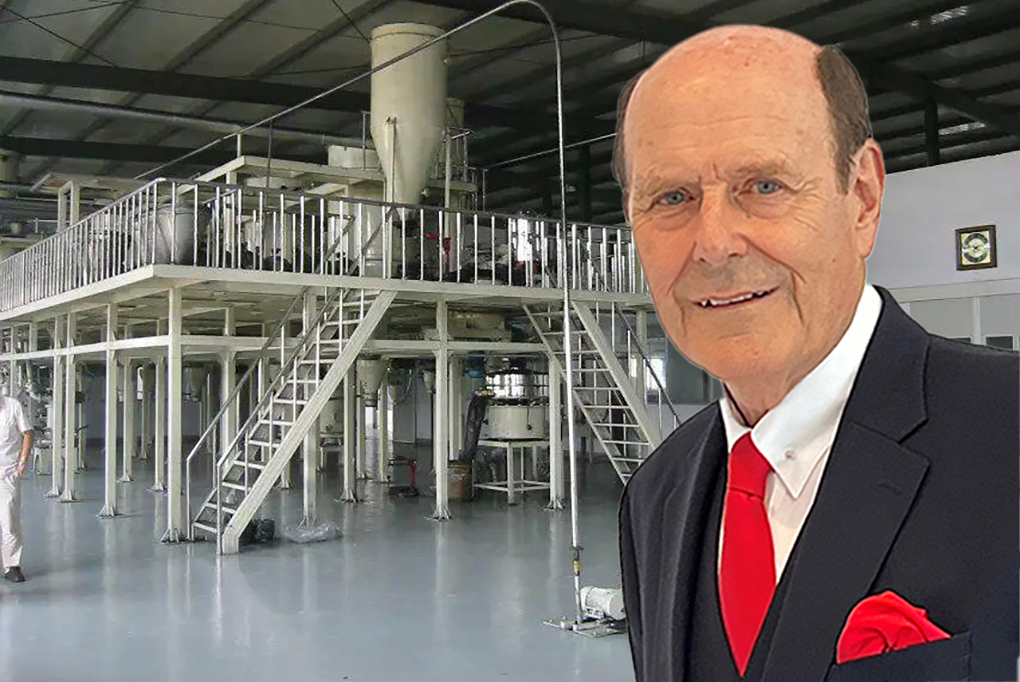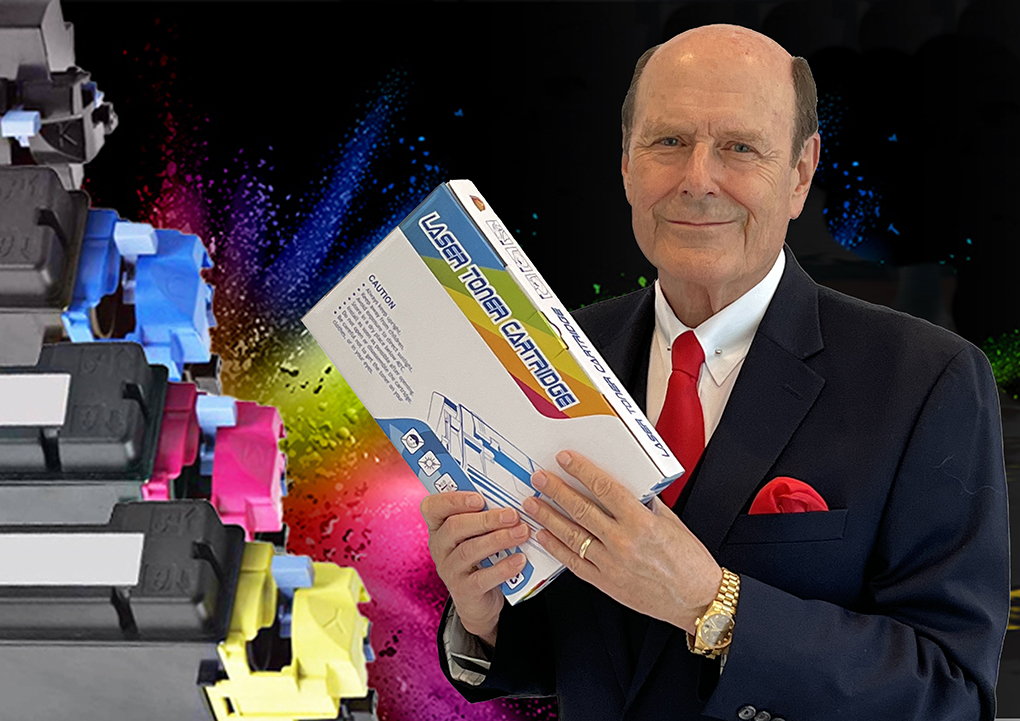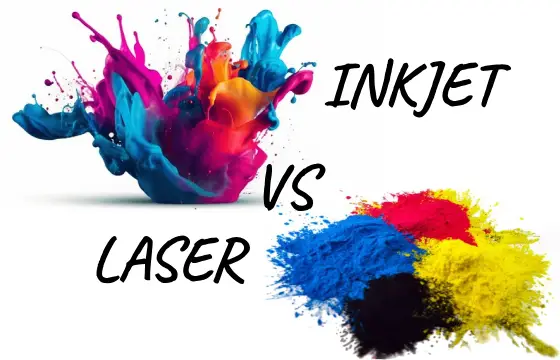The Toner Binder Business – the Technology and the Market

A combination of factors is affecting the business of producing, marketing, and selling toner binders, a key ingredient in all powder toners.
Analyzing global powder toner manufacturing and forecasting trends in manufacturing volume, it is clear that total toner production is starting to decline. The global annual toner production has reduced from 180,000 tons to 155,000 tons over the last five years, a decline of 14%.
What is a Toner Binder?
All toner irrespective of their technology consist of polymer, colorant, wax and various functional internal and surface additives. The toner formulation is determined by the interaction of all the ingredients to ensure the correct functioning of the printer. The polymer is what is referred to as a toner binder and has several functions. The reason for the term binder is that the toner binder binds all of the internal ingredients together in toner particles which are typically from 5.5 to 7.5 microns in size each.
In each toner particle, of which there can be billions on a printed page, the toner binder is responsible for developing and retaining electrostatic charge which is produced by a phenomenon known as triboelectrification. This is used in part of the electrophotographic print process. The magnitude and sign of charge on each of these nanoparticles is important to the correct function of the toner in printing and this is determined by the toner binder chemistry. In the printer whether in operation or not the prevention of absorption of atmospheric moisture is key to optimum performance and so the molecular structure of the toner binder plays a key role.
The toner binder has other crucial functionality in the print process. The toner binder is thermoplastic so is able to transform its nature from a solid at room temperature to become a viscous liquid with the application of heat. The viscosity profile/rheological profile of the toner binder is key to the correct performance of the toner in a specific print engine. Different printer models have different requirements even though their operation is similar. During the fusing step of the print process the toner binder is melted to a degree such that the toner becomes a viscous tacky mass, However the degree of melt and viscosity is not so low that the image on the page is distorted, the toner sticks to the fuser roll, the toner remains on the paper and upon cooling regains its solidity with good adhesion and crease resistance.
There are many different toner binders offered by many different companies for the myriads of toner-based printer applications.
What is happening to toner production?
Production of toner can be categorized by two manufacturing technology types – mechanically produced toner (MPT) and chemically prepared toner (CPT). Global production is a mix of MPT and CPT. The share of these two has progressively shifted towards CPT from MPT from a position where production was virtually all MPT. This trend is forecast to continue at a similar rate. A large proportion of the CPT manufactured does not use fully polymerized polymers and so does not draw on the toner binder market for supply. This consequently has been a factor in depressing the demand for toner binder.
Historically, toner binders used for toner manufacturing were virtually exclusively styrene acrylic resins (STAC). There has been a gradual change of this in this in favor of polyester resins (PE). The chemistry and, consequently, the manufacturing technology and plant used in the production of PE and STAC is totally different. STAC resins are produced using what is call vinyl addition polymerization whereas PE is produced using condensation polymerization. Companies in the toner binder industry have typically specialized in the production and marketing of one or other of these types rather than both. Mitsui majors in the production of STAC toner binders.
The change from STAC to PE has been driven basically by two trends. Firstly, there has been growing consumer demand for printers that fuse and fix toner at ever-lower temperatures to reduce the power consumption of the print engine itself. Secondly, there has been a trend to increase the print process speed for fast printing. This affects the amount of heat energy able to be delivered to a print during the fusing step of printing. These demands have driven the adoption of PE resins as toner binders because these typically exhibit a sharper melt rheology profile and satisfy these requirements.
This change comes with a cost. The cost of PE resins is typically higher than STAC which affects the typical raw materials cost of such toner. The pricing for PE toner binders compared to STAC binders can be 40% or more higher than STAC.
Intensification of market competition due to regional movement, third party manufacturing growth and market share
There has also been a progressive shift in toner manufacturing from “Western Countries” and Japan to East Asia in particular and Asia in general. This has been in combination with a shift in global market share from OEM to third party manufacturers. The affects that this has had on the toner binder business are several. Third party manufacturers have typically not been supplied by the major toner binder manufacturers. These major manufacturers have in the majority been large chemical producers. Principally, OEMs have sourced raw materials including toner binder locally. The decline of market share of the non-Japanese OEMs in favor of Japanese OEMs has meant that the majority of toner binder manufactured and supplied to OEMs in recent times has been from the Japanese chemical companies such as Mitsui. There are seven Japanese companies in the toner binder business today. 53% of the production of these seven companies is of STAC resin with the remainder is PE.
Toner Binder is a relatively small volume application
STAC resin is used in many applications including coatings, adhesives and paints as well as toner which is the minor application. Currently the global production of STAC for all applications is about 2.5 million tons per year. The global consumption of STAC toner binders is about 66,000 tons, only 2.7% of global production. The global market price for STAC is about $2.00 per kg, so the total market sales value is $132m and 3.5% share of total $3.75 bn total STAC resin market. The pricing for STAC toner binder compared to the general STAC market price is slightly higher but only by about 20%. Production volumes of toner binder grades are much lower that for other applications. Toner binders are required to be higher specification and quality and consequently the cost to produce what are relatively small volumes are higher than average.
The affect of the growth of toner manufacturing in Asia
The significant growth in toner manufacturing in East Asia has created demand for toner binders in the region. Toner manufacturers in East Asia have preferred to buy toner binder locally and this has engendered the establishment of toner binder manufacturers in China, Korea, and Taiwan. There are now 10 new manufacturers of toner binder in the region outside Japan. The demand from the East Asian toner manufacturers has been predominantly for STAC resins. East Asian toner manufacturers produce about 30% of global toner and so demand for STAC toner binder in East Asia is about 21000 tons.
Toner market price puts pressure on toner binder pricing
The growth of toner manufacturing in East Asia, which is believed to be overcapacity, has meant that there is very significant price competition and this has put pressure on raw material suppliers to reduce costs and accept lower profitability. Resin manufacturing is a highly capital-intensive business and produces best profitability with minimum raw material costs and high-capacity utilization. Raw material prices have fluctuated quite a lot over the last five years with fluctuation in demand and strictures caused by regional conflicts effect on the price of oil. Currently the price for the source materials for STAC are about 5% higher than five years ago but have periodically been much higher.
The affect of these pressures on the Japanese Toner Binder manufacturers
All of these factors together have meant that the total demand for STAC toner binders from Japanese toner manufacturers together is about 24000 tons down from a peak of 90,000 tons. Mitsui currently has about 18% market share of these products so is producing about 4500 tons of STAC toner binder.
In view of the extreme pressure exerted on the toner binder business by what according to Mitsui is “escalating price competition, soaring raw material prices and shrinking demand for printing” together with their declared corporate objective to become a “global specialty company” with focus on high growth, high profitability specialty and green chemicals it would seem that the decision to cease participation in the toner binder business falls in line with that objective.
Related:
 Graham J. Galliford is a world-renowned consultant to the imaging industry. His work has encompassed the technology of all types of printing products but has been focused on toner-based printing technology since 1974. He founded Galliford Consulting & Marketing, a techno-commercial consulting business concerning toner-based imaging processes, in 1994. The firm’s particular emphasis is on digital printing with electrostatic toner.
Graham J. Galliford is a world-renowned consultant to the imaging industry. His work has encompassed the technology of all types of printing products but has been focused on toner-based printing technology since 1974. He founded Galliford Consulting & Marketing, a techno-commercial consulting business concerning toner-based imaging processes, in 1994. The firm’s particular emphasis is on digital printing with electrostatic toner.
Operating from a unique facility for R&D on digital printing materials his business has completed many projects concerning the formulation, manufacture, application and marketing of these products. Galliford has been a regular speaker at conferences in North America, Europe and Asia on all aspects of the digital printing and the toner business from technology to marketing to manufacturing. He has made over 80 presentations to industry gatherings over the last 30 years, including seminars on digital printing technologies and chemically prepared toner technology and markets. He can be contacted by email at graham@ gallifordconsulting.com
- Toner Cartridge Manufacturers Guarantee Great Color for Their Customers
- The Role of a Bill of Materials in Costings and Pricing
- Digging Deeper into Inkjet Ink Market Share
- Manufacturing Color Toner – Who How and Where
- Supply Chains and Market Integration
- Debate: Toner & Laser Supplies Will Continue to Dominate
- Testing Cartridge Components and Meeting Standards
- The Controversy Over Cartridge “Contaminants” – An Attempt to Avoid Bias
- Facts and Lies over the Toxins in Your Printer Cartridges
- Why Most OEMs Are Japanese
Comment:
Please comment below about this feature article, “The Toner Binder Business – the Technology and the Market.”





Leave a Comment
Want to join the discussion?Feel free to contribute!